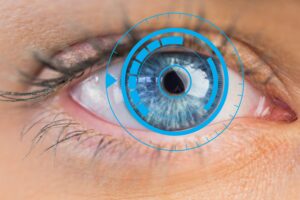 Previous research has shown that physicians make a diagnosis from the patient’s history in 70-90% of cases. By the medical history, physicians garner 60–80 % of the information that is relevant for a diagnosis (Keifenheim 2015).
Previous research has shown that physicians make a diagnosis from the patient’s history in 70-90% of cases. By the medical history, physicians garner 60–80 % of the information that is relevant for a diagnosis (Keifenheim 2015).
“history-taking” as a way of eliciting relevant personal, psychosocial and symptom information from a patient with the aim of obtaining information useful in formulating a diagnosis and providing medical care to the patient. The medical interview is seen as an encounter between physician and patient, both contributing to the results (Ramani 2004).
It tests both your communication skills as well as your knowledge about what to ask. That implies that you need to know what to ask. Acronyms and mnemonics are commonplace in medical and healthcare training. The standard medical model employs the SOCRATES acronym.
Acronym used in medical history taking – Kings College London (2016)| S | Site | Where is the pain? |
| O | Onset | When did the pain start, and was it sudden or gradual? |
| C | Character | What is the pain like? An ache? Stabbing? |
| R | Radiation | Does the pain radiate anywhere? |
| A | Associations | Any other symptoms associated with the pain? |
| T | Time course | Does the pain follow any pattern? Is it getting better or worse? |
| E | Exacerbating/Relieving factors | Does anything change the pain? |
| S | Severity |
Clinical history taking is something that allied health professional, nurses, doctors and surgeons must be proficient at and engage with early on in their training.
But what happens when the questions don’t flow?
In podiatry training, alternative acronyms are used, though this demonstrates the variation in the used of these methods ad brings into question their usefulness in al situations.
Common history taking acronyms used in podiatry| O | Onset | O | Onset |
| L | Location | L | Location |
| D | Duration | D | Duration |
| C | Characteristics | C | Character of pain |
| A | Aggravating/Alleviating factors | I | Impact |
| R | Radiation | P | Progression |
| T | Temporal Pattern | P | Previous treatment |
| S | Severity | A | Associated symptoms |
History taking can be regarded as a fine art. It involves more than good communication skills; it systematically unravels the mystery of the patient’s symptoms and suggests the most likely diagnoses.
The subjective history taking process is an interview, a conversation with the patient which should also help to establish aims and objectives, and potential barriers to any potential interventions. A well-interpreted history leads to an efficient, focused physical examination (Ramani 2004).
The nuance in carrying out a subjective interview is for it to be effective by using techniques such as active listening, reinforcement and motivational interviewing whilst also forming a picture of the potential problem that the dicsussion leads to.
References:
Subha Ramani (2004) Promoting the art of history taking, Medical Teacher, 26:4, 374-376, DOI: 10.1080/01421590410001683230
Tsukamoto, Tomoko & Ohira, Yoshiyuki & Noda, Kazutaka & Takada, Toshihiko & Ikusaka, Masatomi. (2012). The contribution of the medical history for the diagnosis of simulated cases by medical students. International Journal of Medical Education. 3. 78-82. DOI: 10.5116/ijme.4f8a.e48c
Peterson MC, Holbrook JH, Von Hales D, Smith NL, Staker LV. (1992) Contributions of the history, physical examination, and laboratory investigation in making medical diagnoses. West J Med. 1992;156(2):163-5.
Keifenheim, K.E., Teufel, M., Ip, J. et al. (2015) Teaching history taking to medical students: a systematic review. BMC Med Educ 15, 159. https://doi.org/10.1186/s12909-015-0443-x
Why Use Visuals To Think About Patient Histories
The teaching of history taking is so often delivered through verbal and written means, relying heavily on acronyms such as OLDCARTS, OLDCIPPA in MSK or more generally SOCRATES in medical...
Read MoreThe Concept Of A Clinical History
Previous research has shown that physicians make a diagnosis from the patient’s history in 70-90% of cases. By the medical history, physicians garner 60–80 % of the information that is relevant...
Read MoreArticles
The more I think about the impact of clinical histort taking the more it seems to feed into so many aspects of MSK, podiatry, other specialisms within podiatry and learing on the undergraduate podiatry journey. When I get the inspirations, I’ll add the articles.


